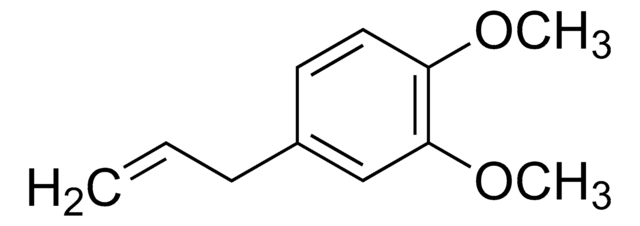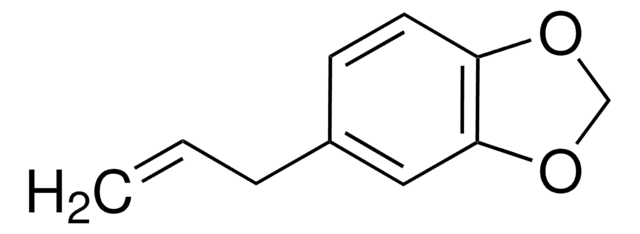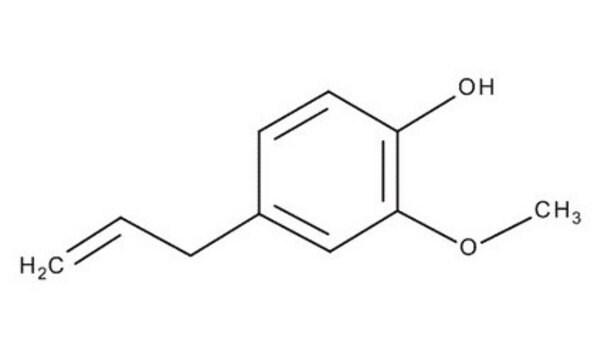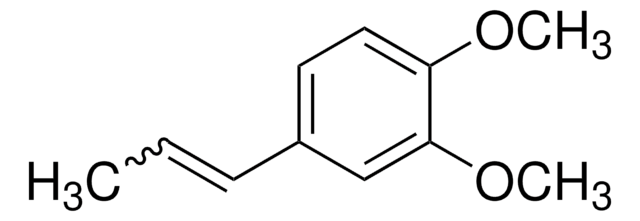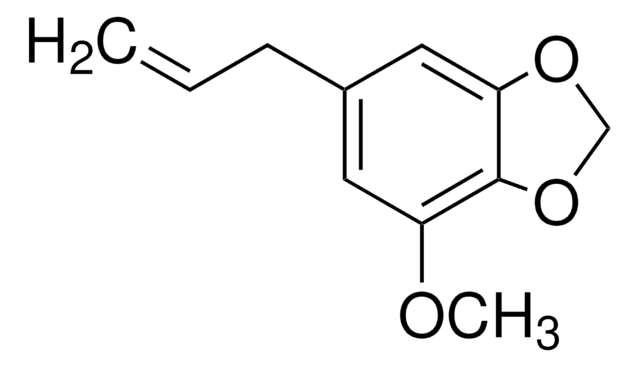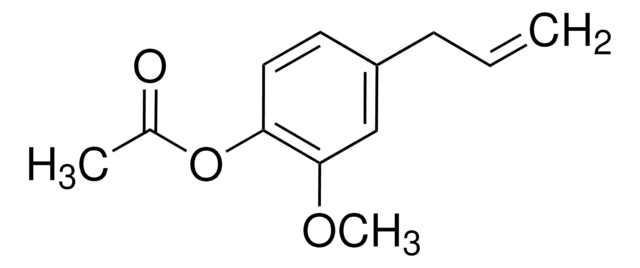W247502
Methyl eugenol
≥98%, FCC
Sinonimo/i:
Eugenol methyl ether, 4-Allyl-1,2-dimethoxybenzene, Eugenyl methyl ether
About This Item
Prodotti consigliati
Origine biologica
synthetic
Livello qualitativo
Grado
Fragrance grade
Halal
Kosher
agenzia
follows IFRA guidelines
Conformità normativa
EU Regulation 1223/2009
FCC
Saggio
≥98%
Indice di rifrazione
n20/D 1.534 (lit.)
P. eboll.
254-255 °C (lit.)
Punto di fusione
−4 °C (lit.)
Densità
1.036 g/mL at 25 °C (lit.)
applicazioni
flavors and fragrances
Documentazione
see Safety & Documentation for available documents
Allergene alimentare
no known allergens
Allergene in fragranze
eugenol
Organolettico
cinnamon; clove; spicy; sweet; warm
Stringa SMILE
COc1ccc(CC=C)cc1OC
InChI
1S/C11H14O2/c1-4-5-9-6-7-10(12-2)11(8-9)13-3/h4,6-8H,1,5H2,2-3H3
ZYEMGPIYFIJGTP-UHFFFAOYSA-N
Cerchi prodotti simili? Visita Guida al confronto tra prodotti
Categorie correlate
Descrizione generale
Applicazioni
- Development of broad-spectrum immunoassay with monoclonal antibody to detect five eugenols and study of their molecular recognition mechanism.: This article presents a new immunoassay using a monoclonal antibody designed to detect multiple eugenol derivatives including methyl eugenol, offering insights into their molecular interactions and potential applications in food safety and pharmaceutical analysis (Luo et al., 2024).
Azioni biochim/fisiol
Altre note
Esclusione di responsabilità
Avvertenze
Warning
Indicazioni di pericolo
Consigli di prudenza
Classi di pericolo
Acute Tox. 4 Oral - Aquatic Chronic 2 - Carc. 2 - Muta. 2
Codice della classe di stoccaggio
10 - Combustible liquids
Classe di pericolosità dell'acqua (WGK)
WGK 1
Punto d’infiammabilità (°F)
230.0 °F - closed cup
Punto d’infiammabilità (°C)
110 °C - closed cup
Dispositivi di protezione individuale
Eyeshields, Faceshields, Gloves, type ABEK (EN14387) respirator filter
Scegli una delle versioni più recenti:
Possiedi già questo prodotto?
I documenti relativi ai prodotti acquistati recentemente sono disponibili nell’Archivio dei documenti.
I clienti hanno visto anche
Il team dei nostri ricercatori vanta grande esperienza in tutte le aree della ricerca quali Life Science, scienza dei materiali, sintesi chimica, cromatografia, discipline analitiche, ecc..
Contatta l'Assistenza Tecnica.